Abstract
Seventeen thousand three hundred and fifty four mildly hypertensive people with diastolic blood pressures between 90 and 109 mm Hg at screening were randomised to active treatment, with bendrofluazide or propranolol, or to placebo tablets. They were followed for a maximum of five and a half years, giving a total of 85,572 patient-years of observation. There were 456 myocardial infarctions or sudden coronary deaths. Drug treatment did not affect the overall rate of coronary events. Rates per thousand person-years were 8.3 and 9.0 in men and 1.8 and 1.7 in women in the active treatment and placebo groups respectively. Event rates were much higher in smokers than in non-smokers on placebo treatment (12.6 and 7.5 in men and 3.5 and 1.0 in women in smokers and non-smokers respectively). An analysis of subgroup results showed a lower event rate in non-smoking men on propranolol than in non-smokers on placebo (5.0 and 7.5 per thousand person-years respectively). Bendrofluazide had no apparent effect on the event rate. The interaction between the type of treatment (propranolol, bendrofluazide, or placebo) and smoking in determining the coronary event rate was not statistically significant, however. The incidence of electrocardiographic changes of silent infarction--that is major Q/QS abnormalities--differed little with sex, smoking habit, or treatment with either active drug.
Full text
PDF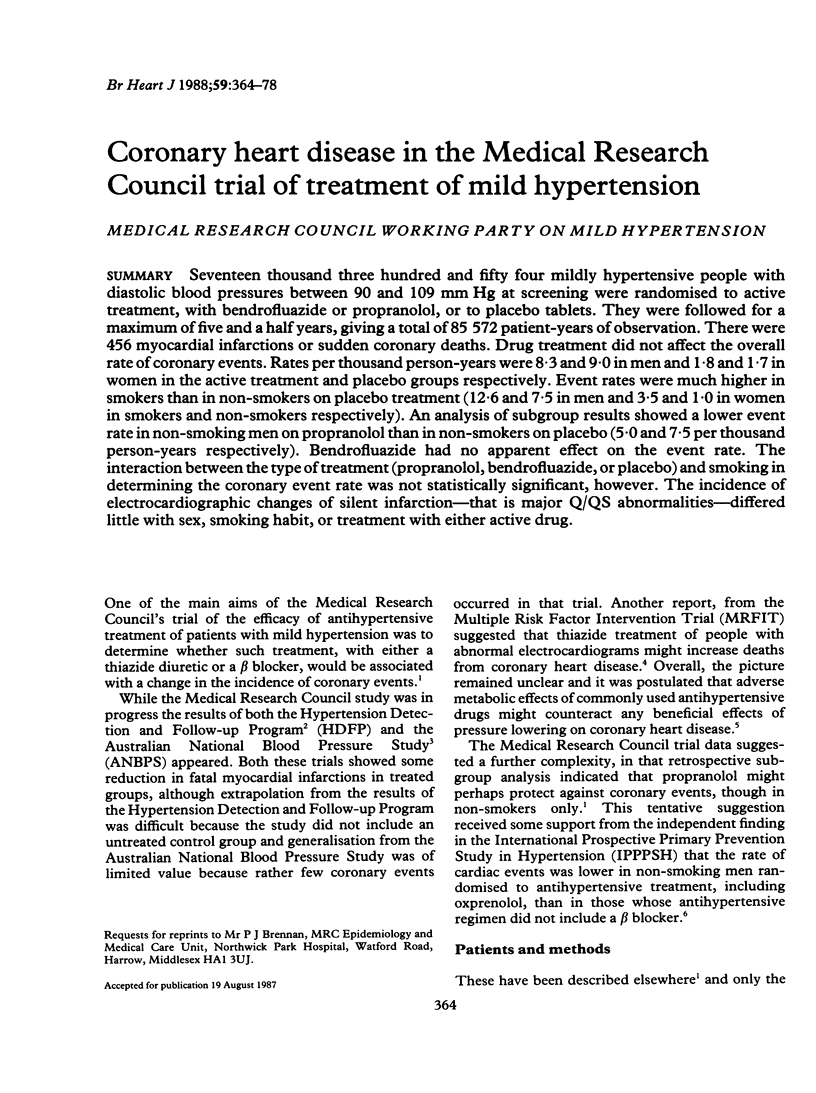
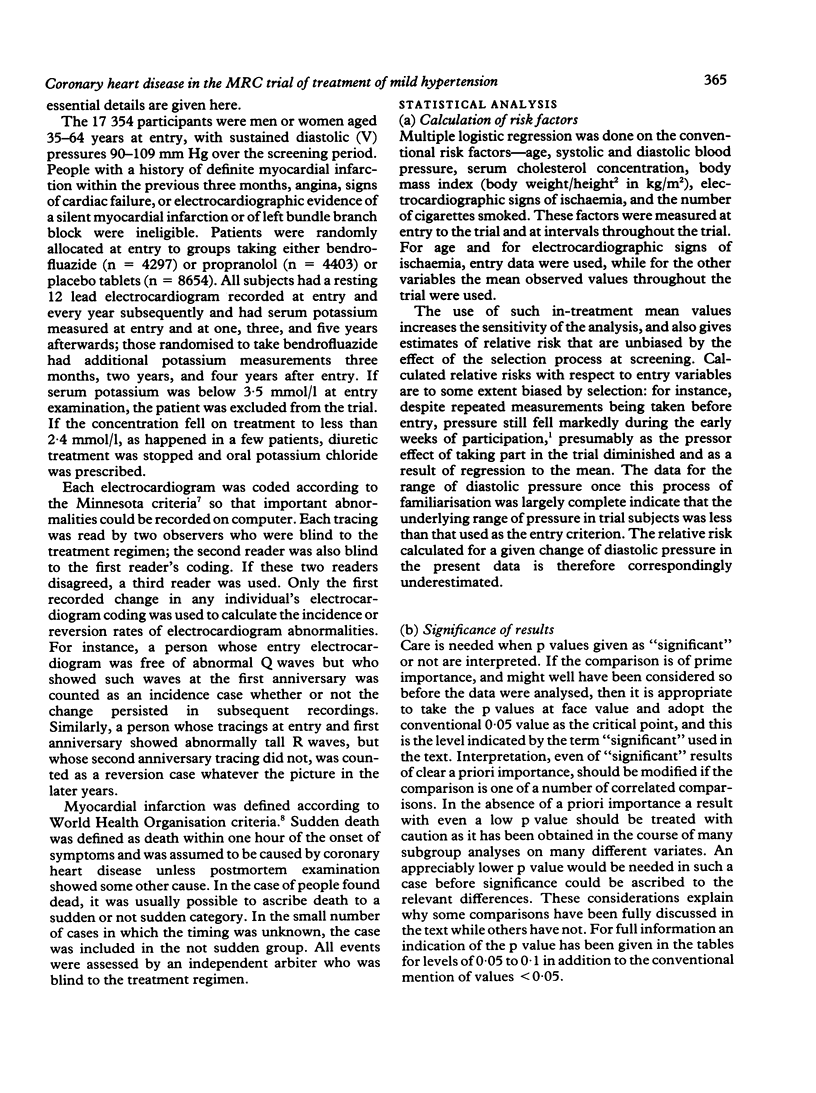
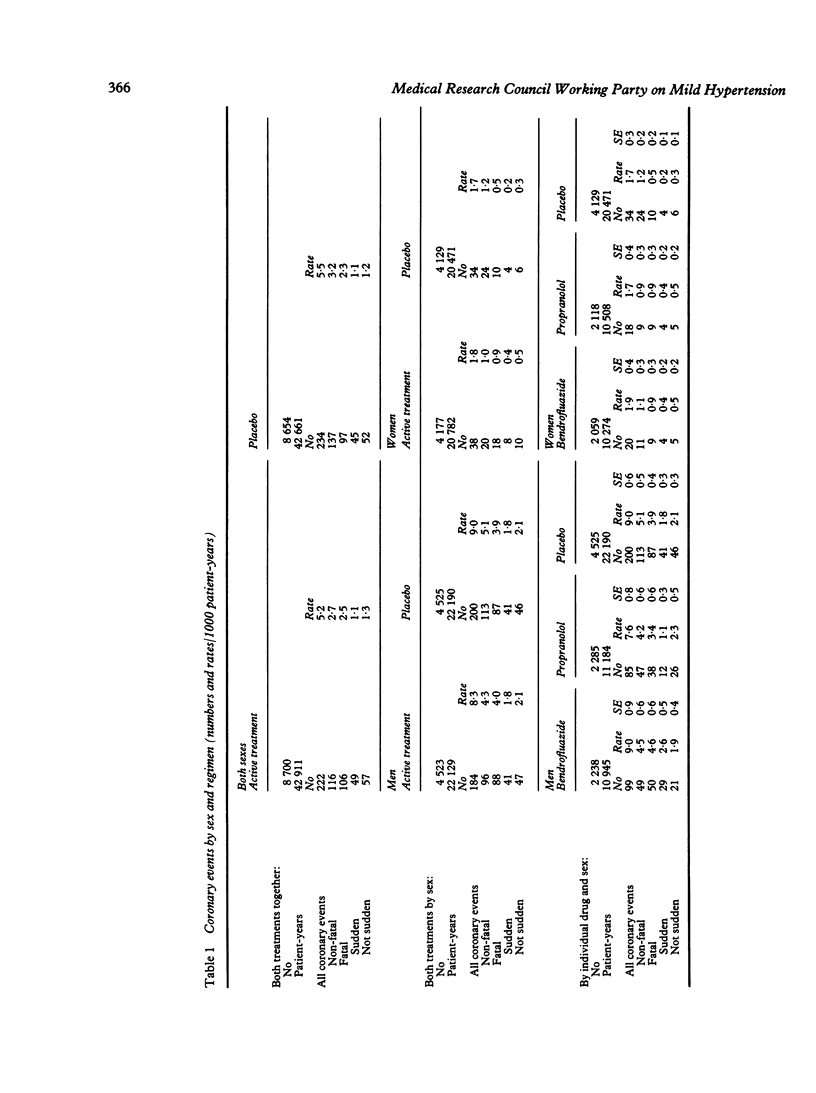
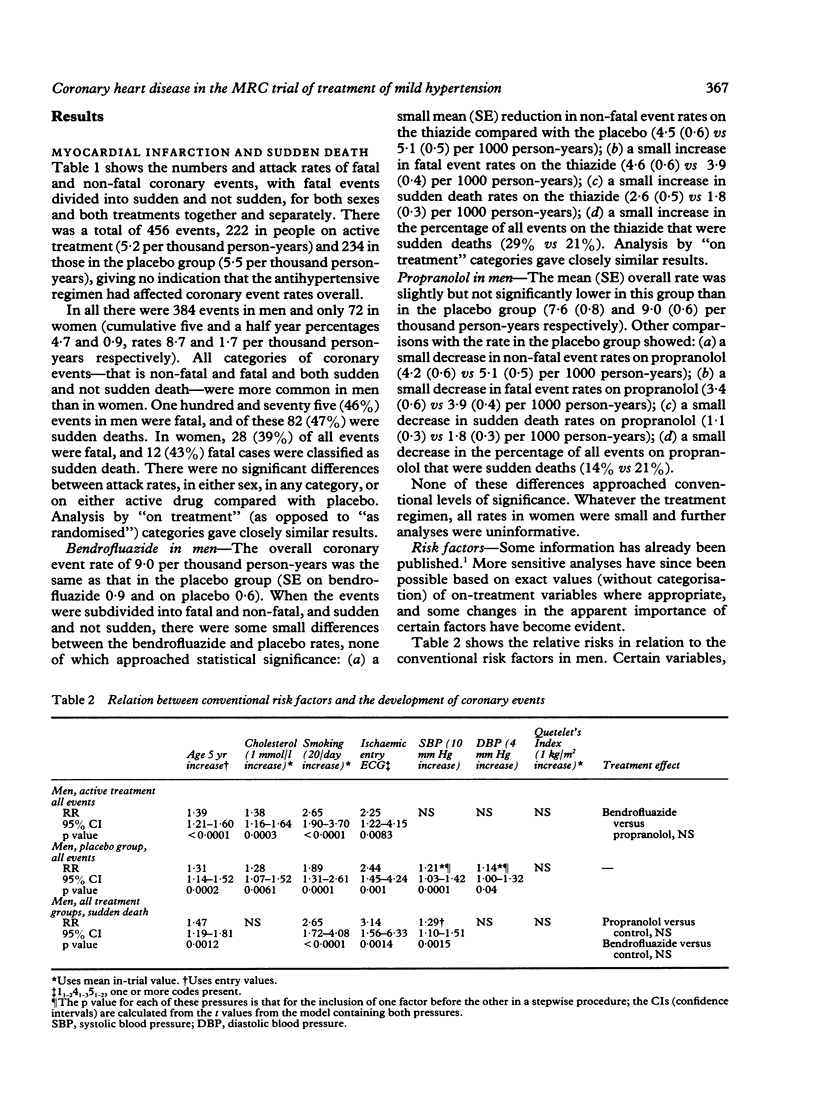
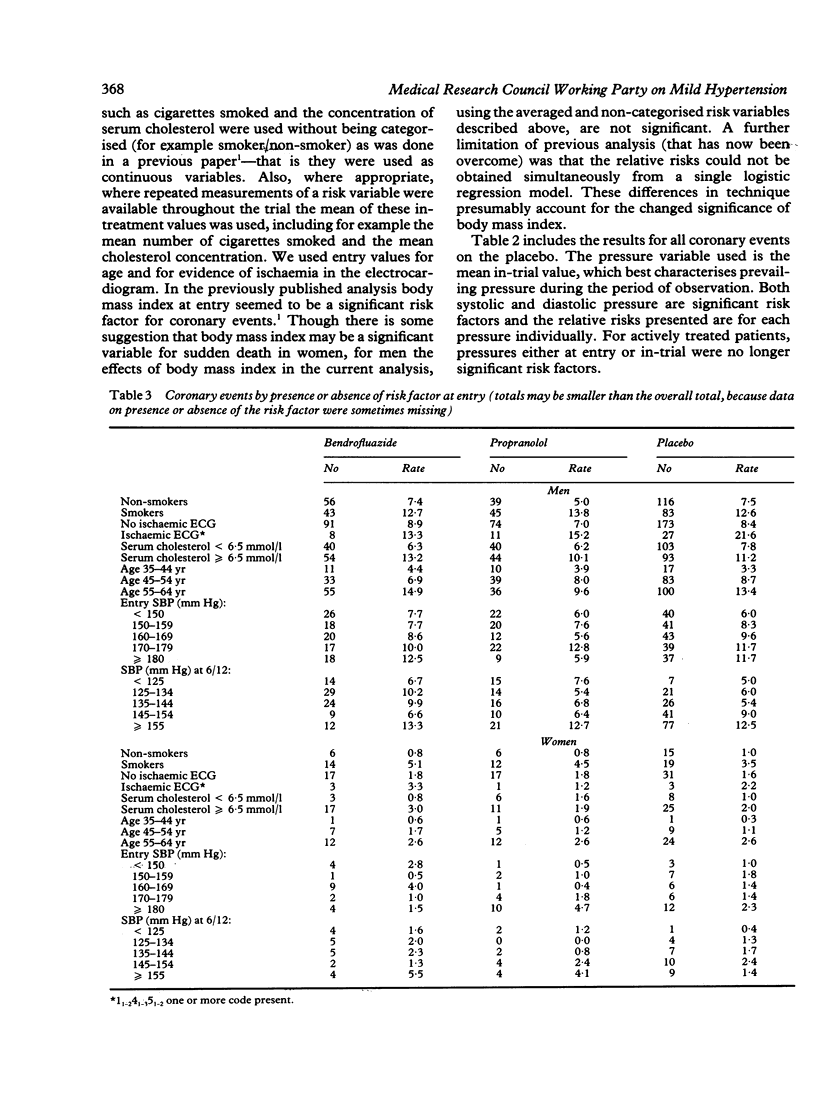
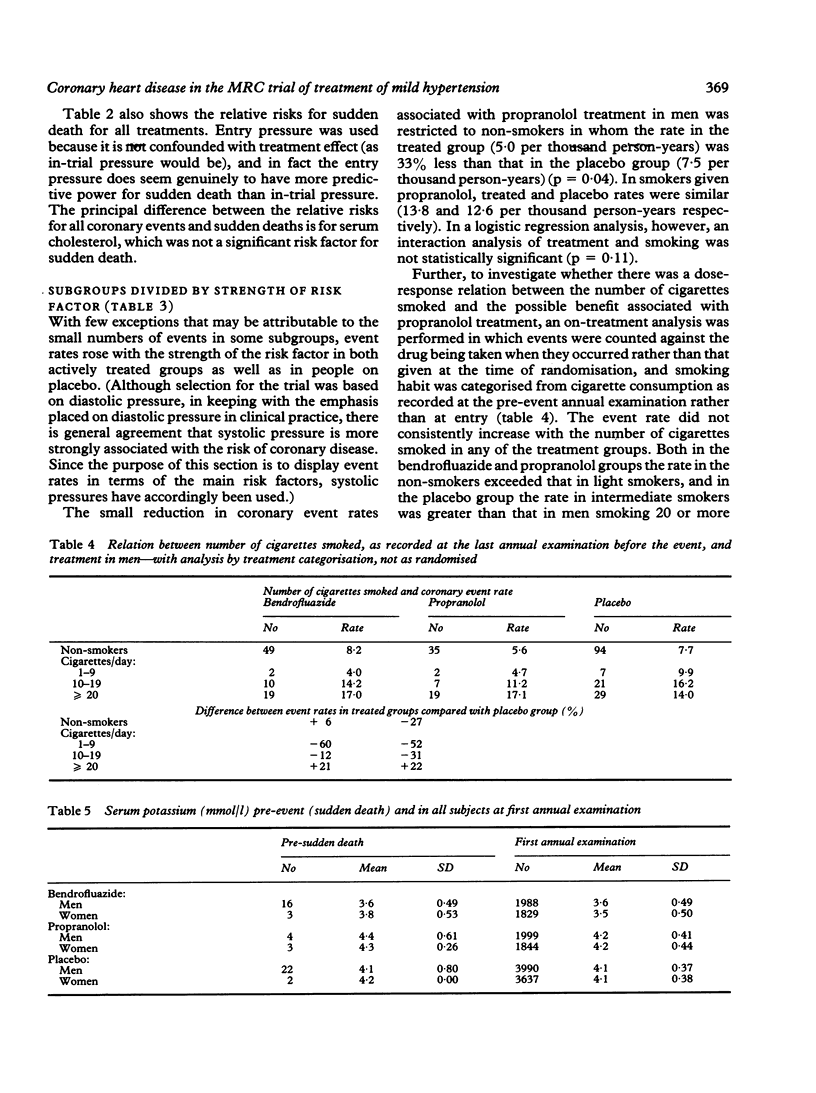
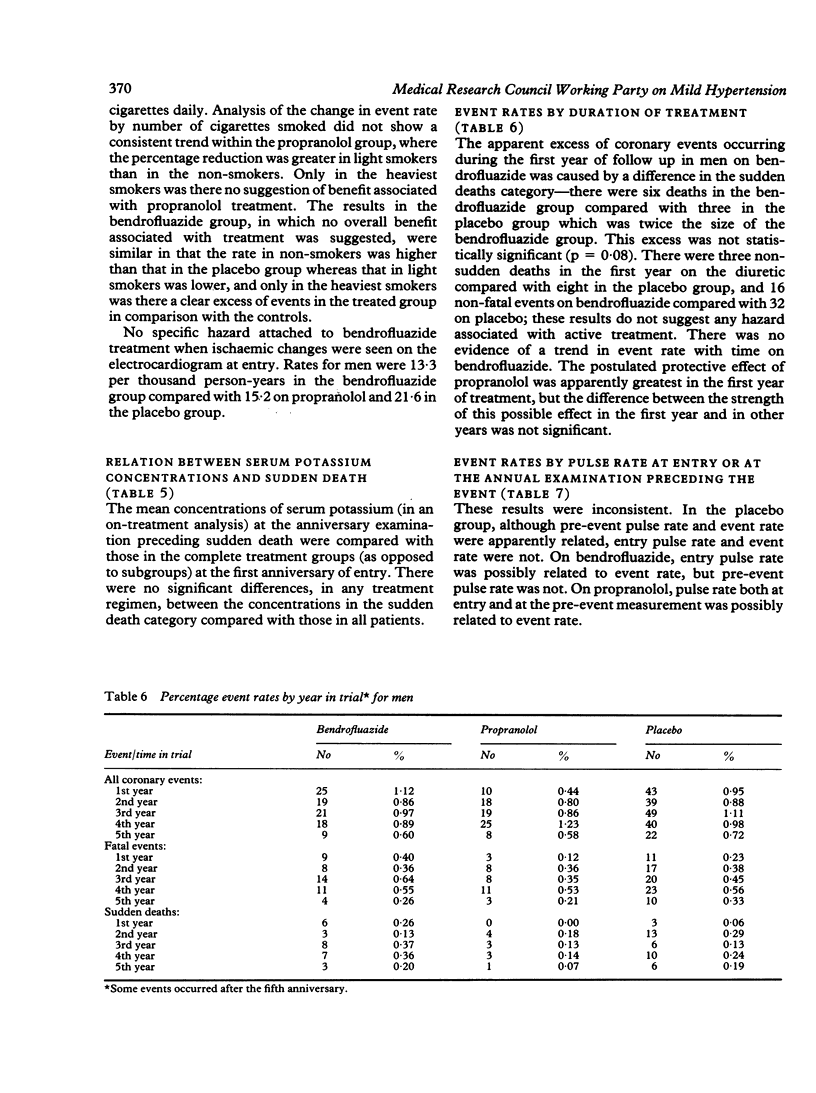
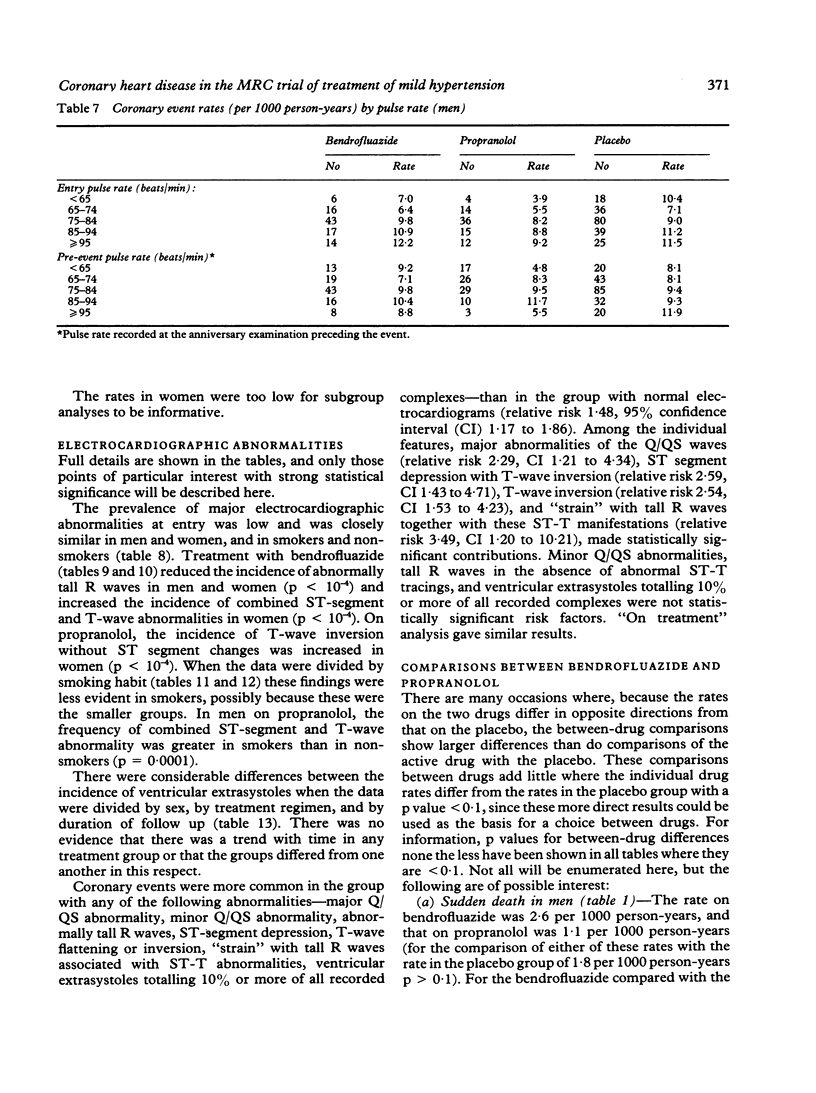
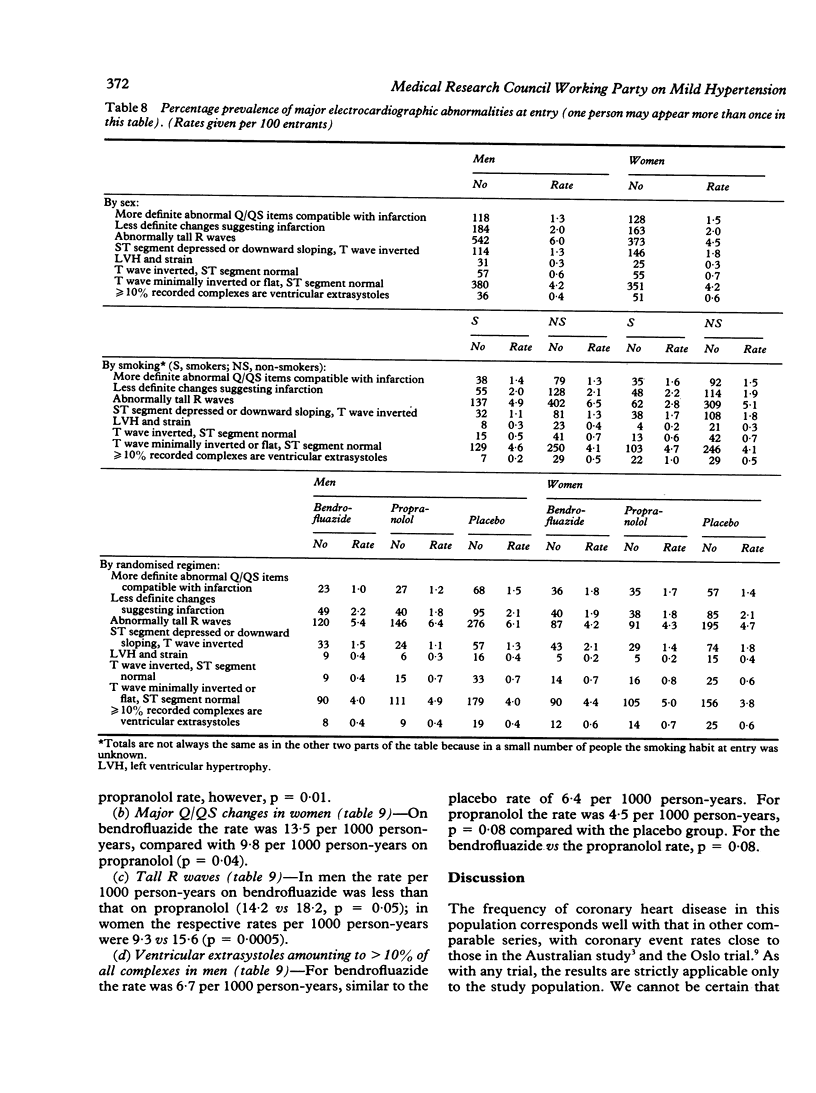
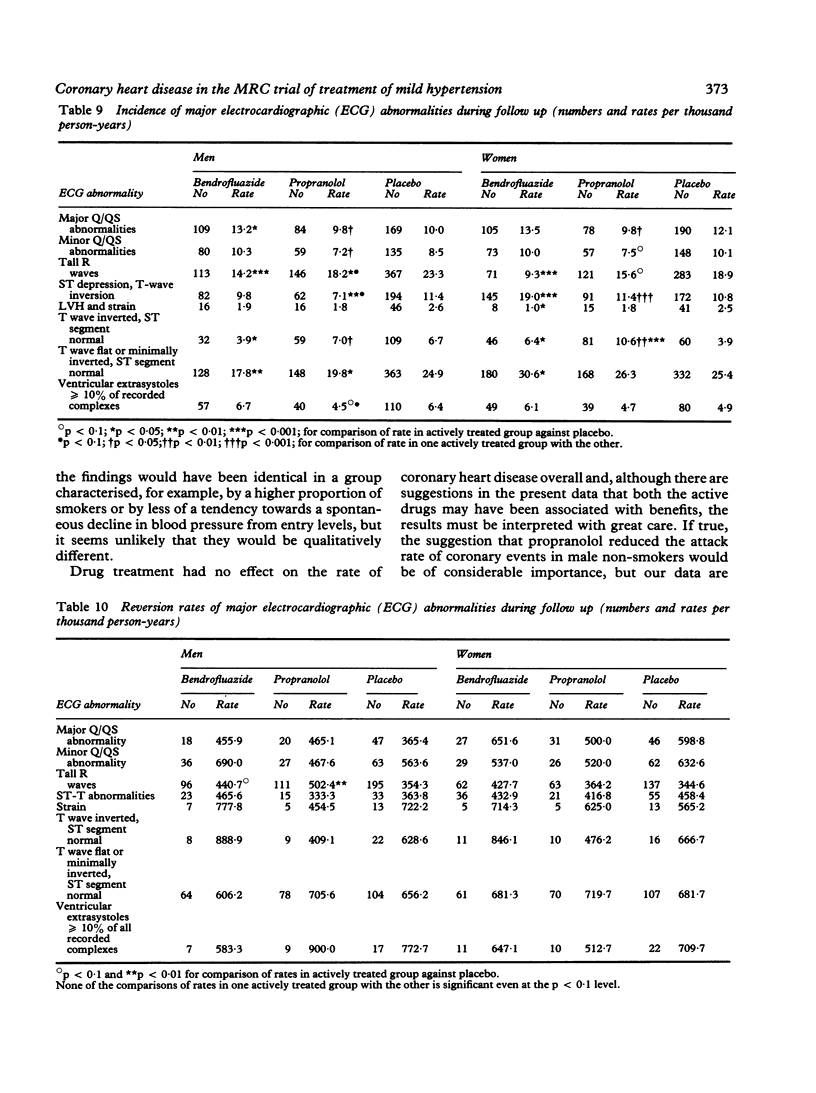
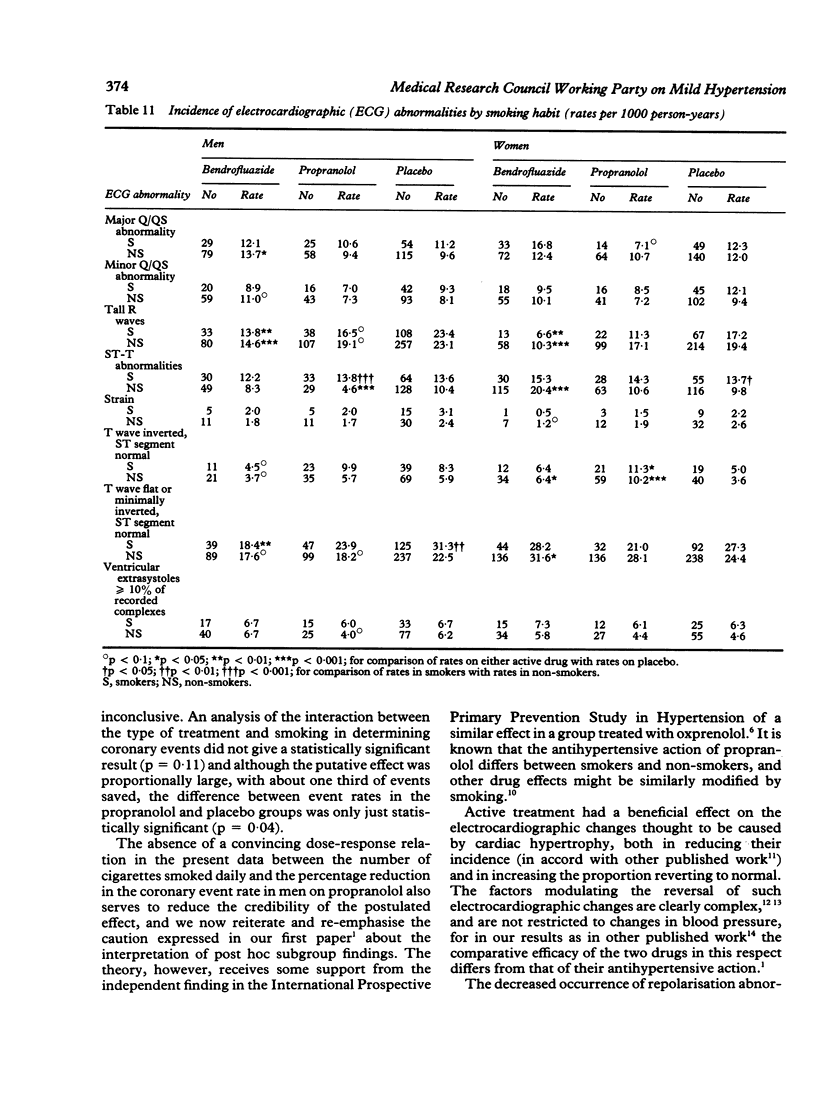
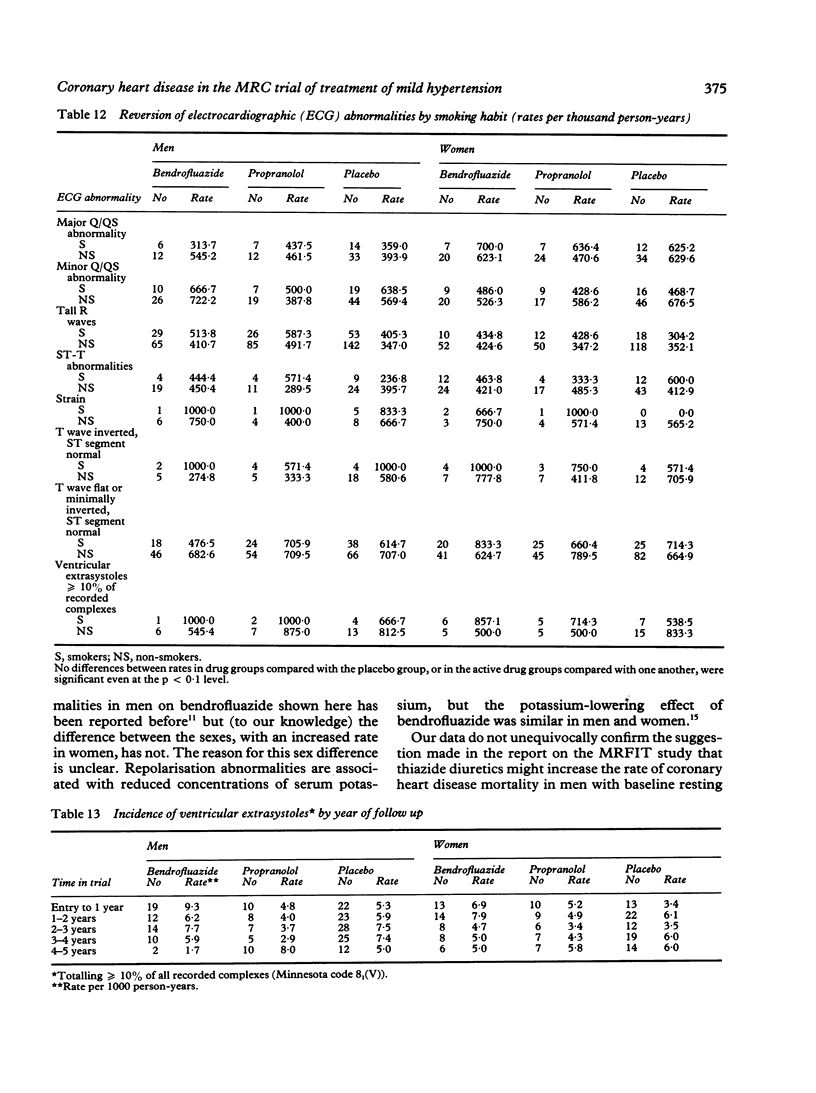
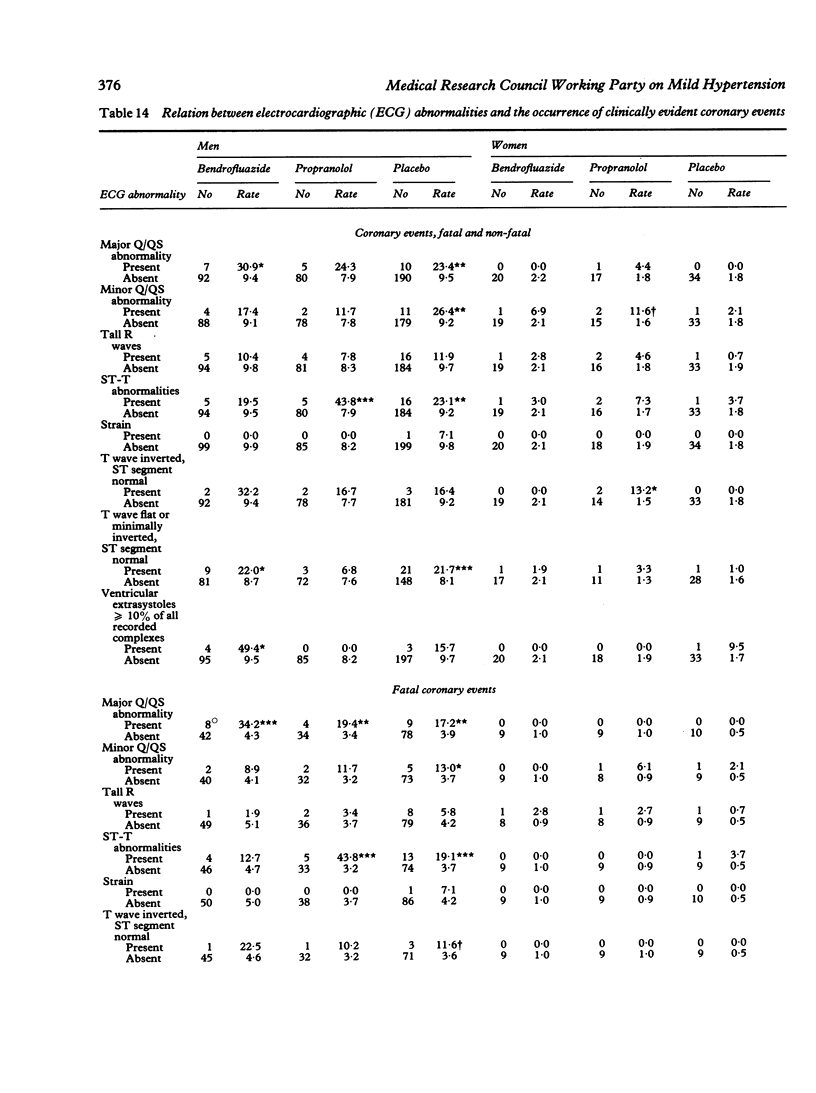
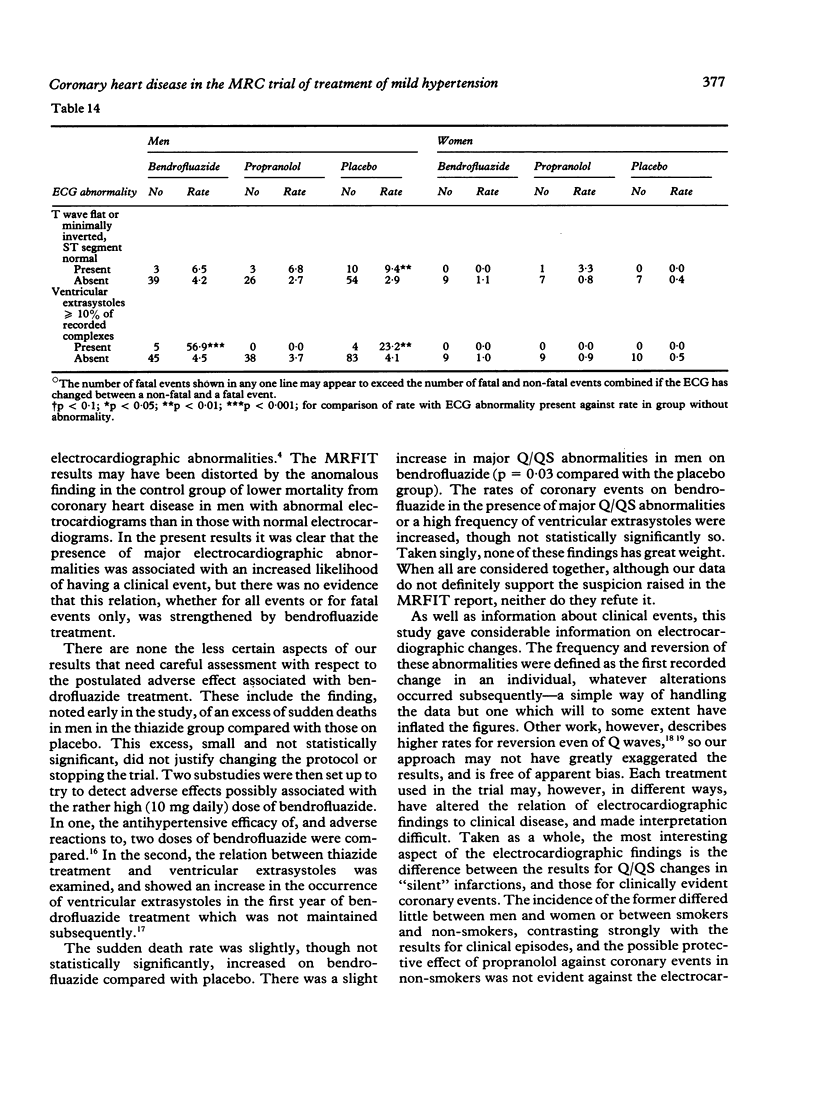
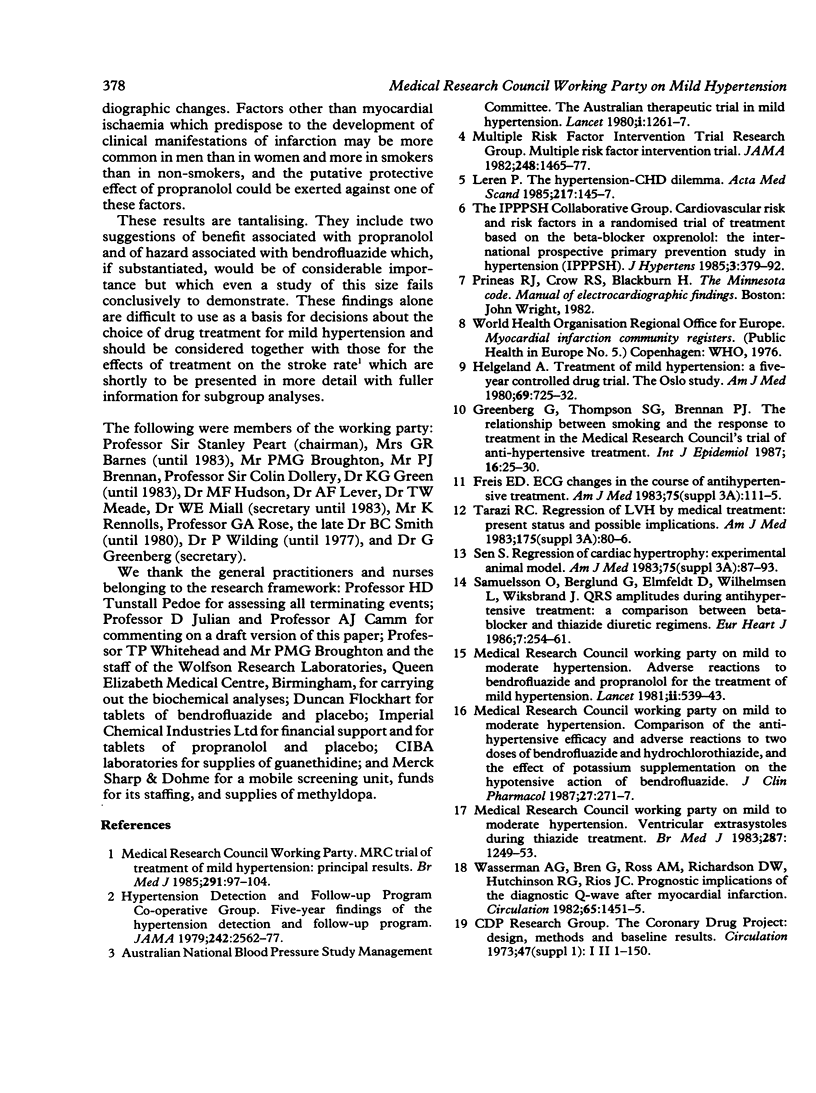
Selected References
These references are in PubMed. This may not be the complete list of references from this article.
- Greenberg G., Thompson S. G., Brennan P. J. The relationship between smoking and the response to anti-hypertensive treatment in mild hypertensives in the Medical Research Council's trial of treatment. Int J Epidemiol. 1987 Mar;16(1):25–30. doi: 10.1093/ije/16.1.25. [DOI] [PubMed] [Google Scholar]
- Helgeland A. Treatment of mild hypertension: a five year controlled drug trial. The Oslo study. Am J Med. 1980 Nov;69(5):725–732. doi: 10.1016/0002-9343(80)90438-6. [DOI] [PubMed] [Google Scholar]
- Samuelsson O., Berglund G., Elmfeldt D., Wilhelmsen L., Wikstrand J. QRS-amplitudes during antihypertensive treatment: a comparison between beta-blocker and thiazide diuretic regimens. Eur Heart J. 1986 Mar;7(3):254–261. doi: 10.1093/oxfordjournals.eurheartj.a062060. [DOI] [PubMed] [Google Scholar]
- Sen S. Regression of cardiac hypertrophy. Experimental animal model. Am J Med. 1983 Sep 26;75(3A):87–93. doi: 10.1016/0002-9343(83)90124-9. [DOI] [PubMed] [Google Scholar]
- Tarazi R. C. Regression of left ventricular hypertrophy by medical treatment: present status and possible implications. Am J Med. 1983 Sep 26;75(3A):80–86. doi: 10.1016/0002-9343(83)90123-7. [DOI] [PubMed] [Google Scholar]
- Wasserman A. G., Bren G. B., Ross A. M., Richardson D. W., Hutchinson R. G., Rios J. C. Prognostic implications of diagnostic Q waves after myocardial infarction. Circulation. 1982 Jun;65(7):1451–1455. doi: 10.1161/01.cir.65.7.1451. [DOI] [PubMed] [Google Scholar]


